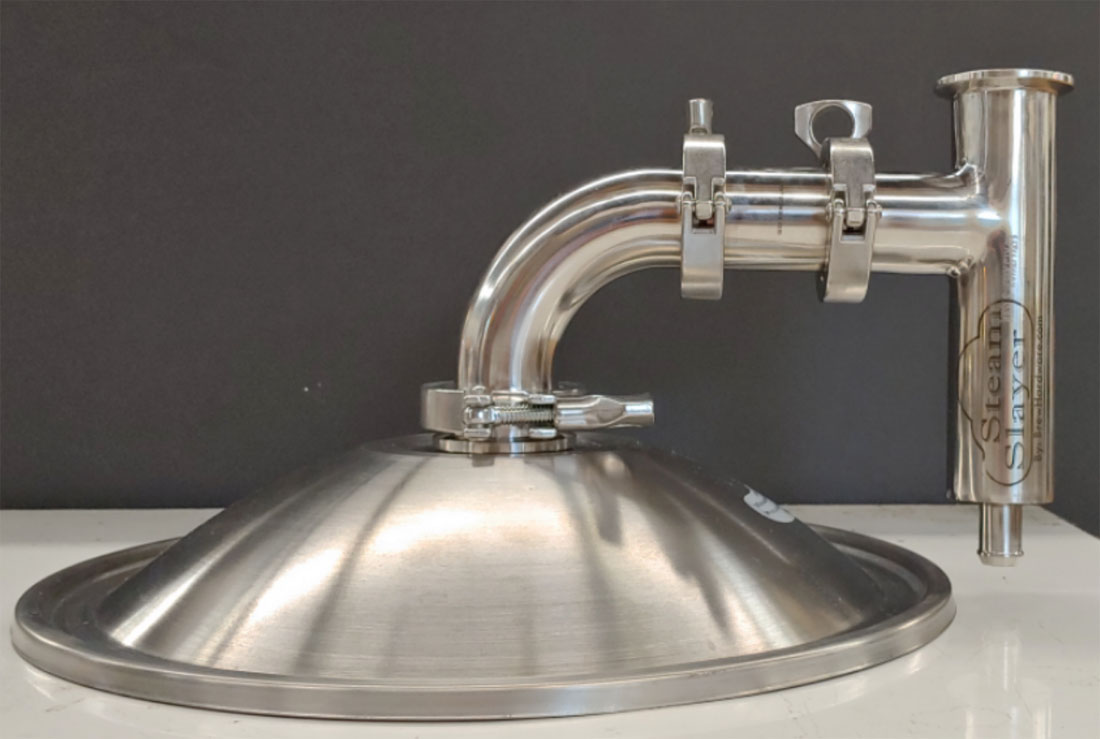Great points and questions. Thank you very much for your help. I will try to answer them below:
1) I've seen the BEER N BBQ video, and while I haven't seen evidence of water coming in through the condenser arm so far, I will do another test tonight where I measure the pre- and post-boil volumes.
2) I believe the heat output of the induction burner is constant. It does not drop below 209*F at any point before turning on the condenser. It is an 1800w unit, which I have plugged in using a 12ga extension cord. Also, the pump is on a separate circuit, and is only rated for "0.6 A max" anyway.
3) Steam does come out around the lid before the condenser is turned on, but once it's on, the steam stops coming out.
4) The pump is 6 PSI. I can't vouch for how effectively it is supplying the spray nozzle or the efficacy of the spray pattern, but I know that these are things that Spike is specifically controlling for by including everything together as a set. In
another thread, they stressed the point strongly that the whole setup was assembled and tested to work together to provide the desired results.
5) I didn't measure the kettle with a level, and wouldn't be surprised if it's slightly off, but also I did a test where I tried to get the spray to backwash into the lateral arm of the condenser unit, and couldn't get it to do it. I basically held the condenser tube in my hands with the sprayer attached but the other two ends open, such that it was not connected to the lid but instead free floating in air. I then turned on the water and rotated the condenser around all axes. At no point was I able to get water to come out of the lateral arm.
I did receive an interesting suggestion directly from Spike today, which was that perhaps the steam being sucked out by the condenser is itself causing the temperature to drop, as the induction plate may only be able to achieve boil with the added heat of the entrapped steam. I don't know if I totally buy this yet, as I feel that I have been able to achieve a boil with this induction plate before, even with the lid off. And I also tried this setup on my gas stovetop burner, which puts out a lot more heat, and had the same effect: the temperature dropped. In this case, however, it only dropped 1 degree, which leads me to believe that there is an input heat level that would be able to overcome the temperature dropping effect of the condenser and maintain a boil throughout. But is this really normal or necessary? Is everyone else, who isn't experiencing this, using some big-ass burners or something?









![Craft A Brew - Safale BE-256 Yeast - Fermentis - Belgian Ale Dry Yeast - For Belgian & Strong Ales - Ingredients for Home Brewing - Beer Making Supplies - [3 Pack]](https://m.media-amazon.com/images/I/51bcKEwQmWL._SL500_.jpg)


















































